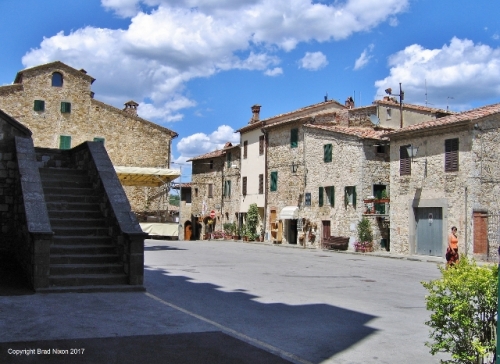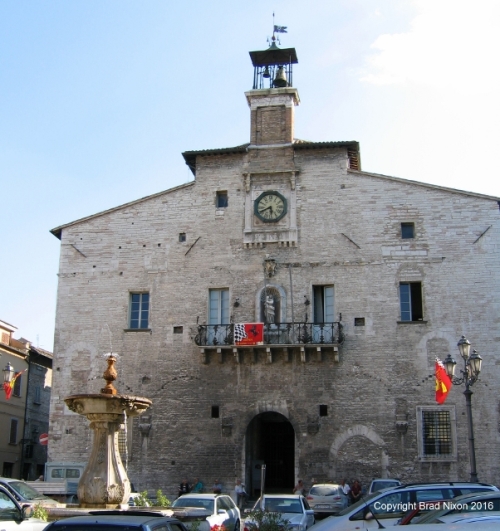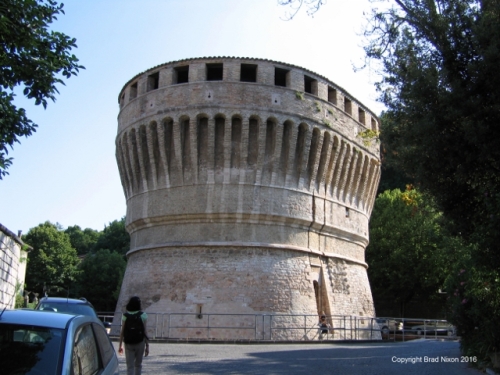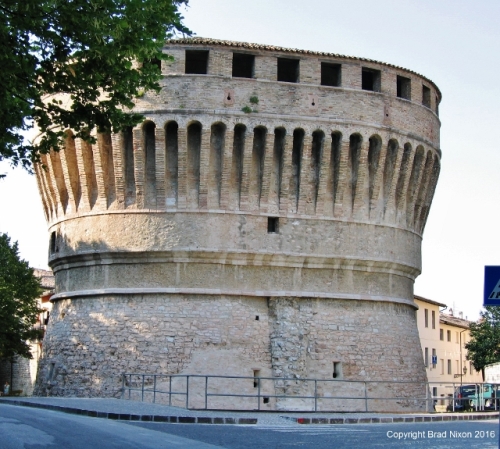I feel that I’ve been immured in a library for a week. It’s time to get out and see the world. What about Italy?
It’s difficult for first- second- or even third-time travelers to Italy to escape the lure of Rome, Florence, Naples, Milan, Venice, Pisa and a host of other cities to explore off the beaten track. Many tourists manage to see the countryside of Tuscany, but Italy abounds with mountains, forests and meandering roads that pass through them, with little-known towns and villages waiting to be discovered at every turn.

We’ve had some opportunities to explore Italy in that way on a few trips. On one, we were based in an apartment in Urbino, capital of the Marche region, due east of Rome. I wrote a brief snapshot of Urbino HERE. The Marche includes beautiful, rugged mountains and forests, as well as a spectacular string of beach cities along the Adriatic coast. I wrote recently about one of those, Fano, HERE.
We had a car, which allowed us to range farther and more quickly than many travelers have opportunity using trains and local buses. Here is a map of a portion of the Marche.

Urbino is circled in the upper left, Fano is circled on the coast at the right. We drove south from Urbino to see the spectacular Gola del Furlo, or Furlo Gorge, circled in blue.

The Candigliano River has carved a deep canyon through limestone mountains, creating a narrow, scenic drive protected as the Riserva Naturale Statale Gola del Furlo.
After exiting the southern end of the Gorge, we drove southwest, on that route colored yellow on the map, which more or less follows the important Roman Via Flaminia (which leads to Fano on the coast). We had no destination, no plan. What would we find?
We found a town tucked into a narrow valley: Cagli (cah-LYEE). It’s in the lower left corner of the map above.
Cagli has about 9,000 residents, and was already an important center in the 6th Century, when it was part of the Byzantine Empire. It truly blossomed in the Renaissance, under the power of Federico of Montefeltro. Occupying the principal city plaza is the 13th-Century Palazzo Communale, City Hall.

Although the structure predates Federico, he commissioned his go-to architect, Francesco di Giorgio Martini, to renovate it. Some of the currently visible building is Martini’s work, although his plans were never fully carried out. Other portions were yet later additions in the 15th and 16th Centuries.
As in any town, anywhere, there’s more to see in relatively small Cagli than the brief time we had, since we’d discovered it by chance, and without any advanced study. The gem of the city that we saw is another of Martini’s works, the surviving portion of a now-demolished fortress. It’s named the Tower of the Fortress, Rocca Torrione.
This tower, isolated at an intersection of streets, is imposing enough, although it is only a suggestion of what was once a massive fortress on a nearby hill. It dates from 1481. One can go inside the tower, and descend several levels below the street, into a setting that will satisfy anyone’s expectations for an evocative, ancient castle keep. Not accessible when we were there (and perhaps all the more appealing as a result) is a subterranean secret passage (soccorso coverto) that connects the tower to the ruins of the hilltop fortress. I regret that I don’t have details about accessing the secret passage, or if that’s ever possible.
The tower is in excellent condition, and — it is Italy, after all — now hosts displays of sculpture by local artists.
It was a fortunate day of discovery. As always, one has to keep one’s eyes open and, yes, occasionally stop the car, get out and look around.
What’s your favorite chance discovery on your travels? Leave a comment and let me know.
Photographs of the Rocca in this post and select images from other Under Western Skies posts are available on Shutterstock.com. Click on the linked photos, or CLICK HERE to view the Underawesternsky photo portfolio.
© Brad Nixon 2016, 2017. Furlo Gorge photo © Marcy Vincent, all rights reserved.


Love those old stone buildings. Bon journee!
LikeLike
By: La Boheme on April 20, 2016
at 1:48 pm